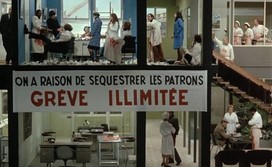Consuming Class. Imagining Upper-Middle Classness through Photography in Vanity Fair
Consuming Class. Imagining Upper-Middle Classness through Photography in Vanity Fair
Author(s): Amelie OchsSubject(s): Photography, Culture and social structure , Interwar Period (1920 - 1939), Marketing / Advertising, History of Art
Published by: Widok. Fundacja Kultury Wizualnej
Keywords: consuming class; middlebrow culture; image consumption; Vanity Fair; advertising photography; visual ideology;
Summary/Abstract: This art historical close-reading enters into dialogue with theories of class and is located at the intersection of visual history, periodical studies and historical consumer research. While the term “consuming class” is closely connected to the present globalized world, the origins of this social phenomenon date back at least to the 19th century. The article examines the ways in which photography is used to imagine this class and its sense of distinction. Taking as its object Vanity Fair’s November 1922 issue, the author analyzes different uses of photography and its relation to readers. Stressing social theories by Thorstein Veblen and C. Wright Mills, she defines the consuming class as an upper-middle class, searching for a point of orientation in high society culture in order to stabilize their own class-consciousness. In this sense, she argues that the visual content of Vanity Fair is rather a presentation for – than a representation of – the consuming class. The article also examines the modern magazine as a display and circulation platform for modern art, photography and advertisement which motivates the visual and social practice of image consumption.
Journal: Widok. Teorie i Praktyki Kultury Wizualnej
- Issue Year: 2021
- Issue No: 31
- Page Range: 1-45
- Page Count: 45
- Language: English

